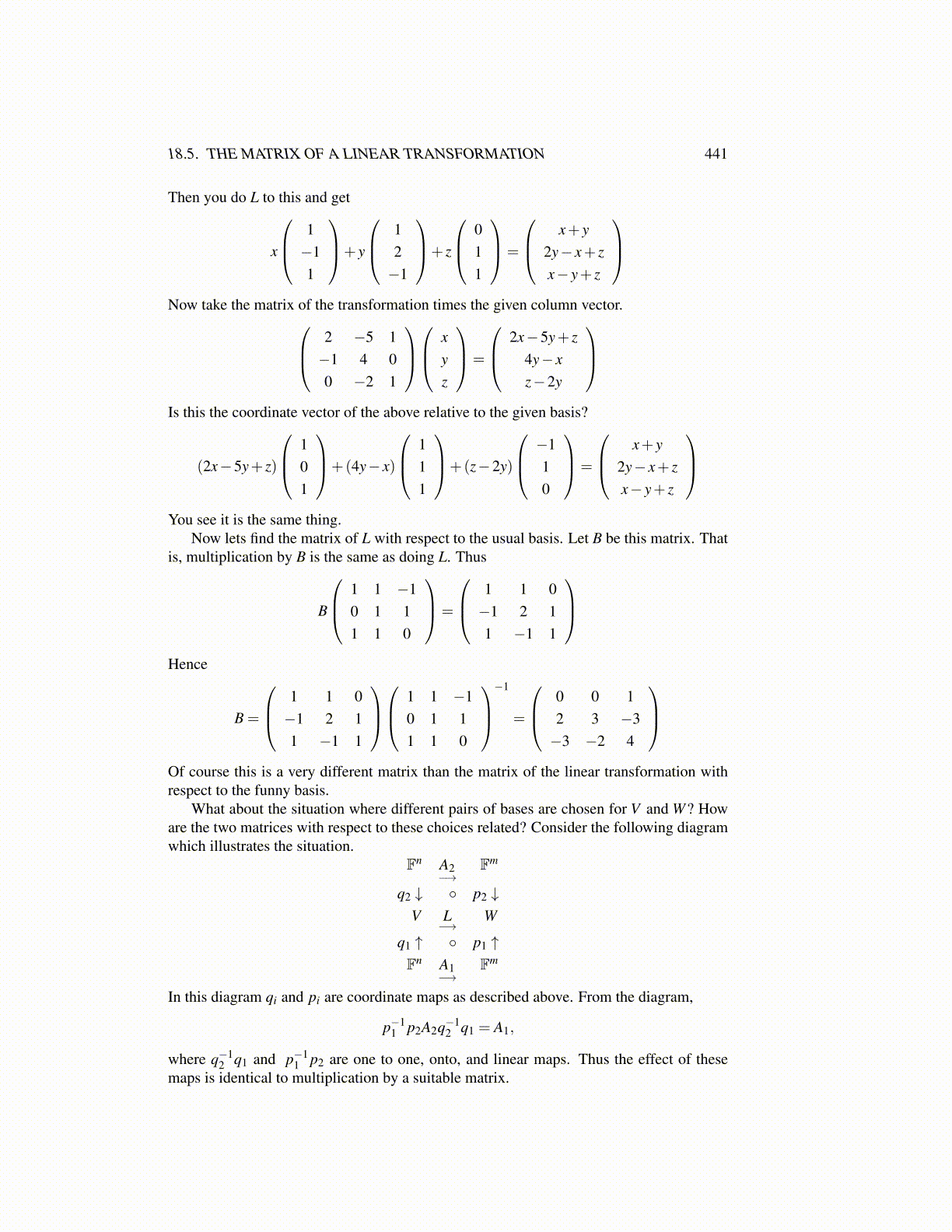
18.5. THE MATRIX OF A LINEAR TRANSFORMATION 441
Then you do L to this and get
x
1−11
+ y
12−1
+ z
011
=
x+ y2y− x+ zx− y+ z
Now take the matrix of the transformation times the given column vector. 2 −5 1
−1 4 00 −2 1
x
yz
=
2x−5y+ z4y− xz−2y
Is this the coordinate vector of the above relative to the given basis?
(2x−5y+ z)
101
+(4y− x)
111
+(z−2y)
−110
=
x+ y2y− x+ zx− y+ z
You see it is the same thing.
Now lets find the matrix of L with respect to the usual basis. Let B be this matrix. Thatis, multiplication by B is the same as doing L. Thus
B
1 1 −10 1 11 1 0
=
1 1 0−1 2 11 −1 1
Hence
B =
1 1 0−1 2 11 −1 1
1 1 −1
0 1 11 1 0
−1
=
0 0 12 3 −3−3 −2 4
Of course this is a very different matrix than the matrix of the linear transformation withrespect to the funny basis.
What about the situation where different pairs of bases are chosen for V and W? Howare the two matrices with respect to these choices related? Consider the following diagramwhich illustrates the situation.
Fn A2−→
Fm
q2 ↓ ◦ p2 ↓V L
−→W
q1 ↑ ◦ p1 ↑Fn A1
−→Fm
In this diagram qi and pi are coordinate maps as described above. From the diagram,
p−11 p2A2q−1
2 q1 = A1,
where q−12 q1 and p−1
1 p2 are one to one, onto, and linear maps. Thus the effect of thesemaps is identical to multiplication by a suitable matrix.